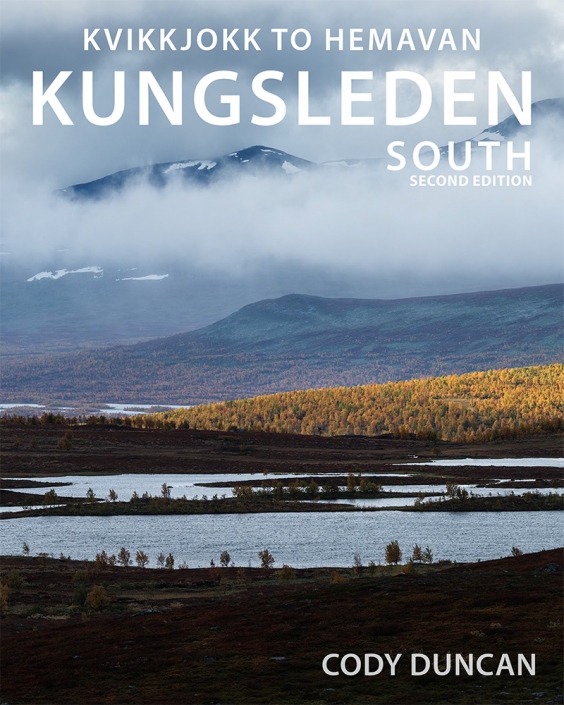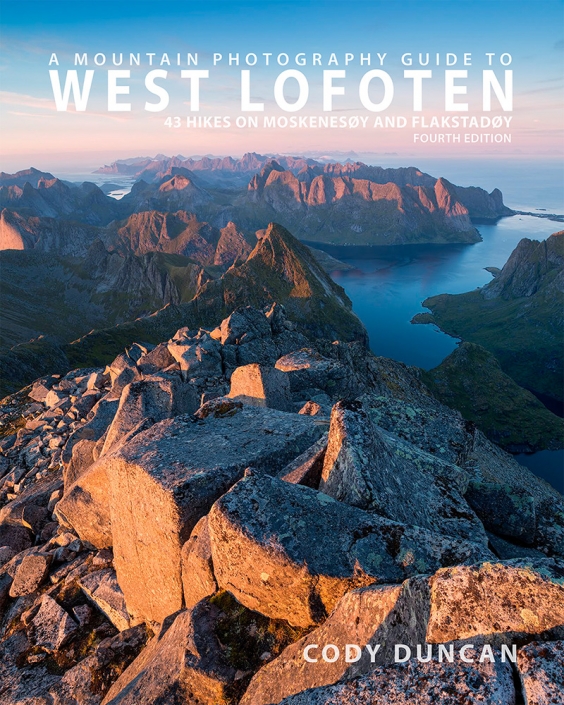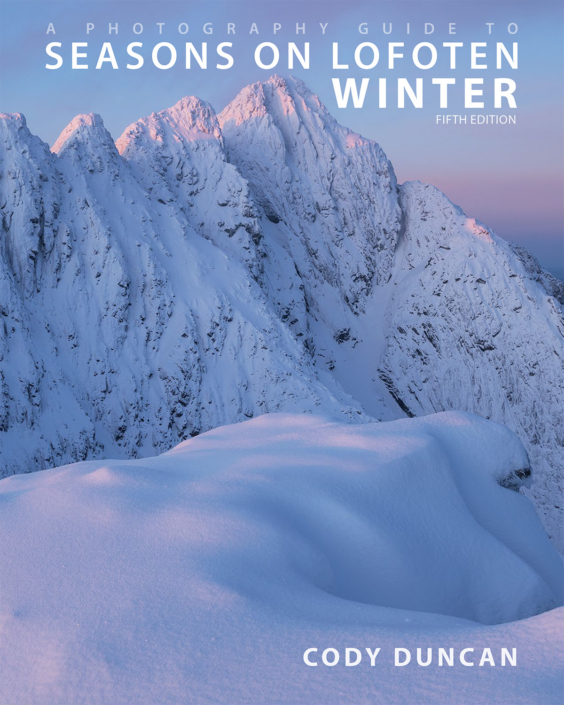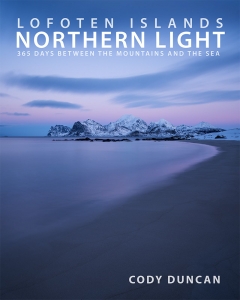LOFOTEN ON A BUDGET
While Norway ranks as one of the world’s most expensive countries, it is actually quite possible to travel on a relatively tight budget if you are willing to make a few compromises, forgo some comfort, and perhaps get a little wet or cold. To me, traveling in Norway/Lofoten is about stunning landscapes, rugged beauty and wild weather. Stuff that you really don’t need to pay for. If you are looking for a drinking, culinary, or shopping holiday, then I suggest you look elsewhere (unless you are rich). But if you’re interested in the outdoors and willing to rough it from time to time, then the Lofoten islands do not need to be an expensive travel destination.
If you are carrying a tent and willing to camp and hitchhike your entire time on the islands, then it is very possible to get by on a budget of less than 100 NOK/day, which would more or less be purely food costs and maybe a bus ride here or there and one night at a campground over the course of a week.
If you are still willing to hitchhike most of the time, but might take a bus or two and want to stay at a campground or hostel a couple times per week, then you are looking at a budget of around 150-200 NOK/day (averaged over a week).
If you’re mostly going to be staying at campgrounds or hostels and will utilize buses for most your travels, and want to eat semi-decent food for dinner, then budget for around 200-300 NOK/day.
Lets looks a sample for a possible medium-low budget
Day 1 – arrive bodø
Buy food for 3 days – 100 NOK
Night 1 – ferry terminal – 0 NOK
Day 2 – travel to Lofoten
Ferry to Moskenes – 170 NOK
Walk to Reine – 0 NOK
Ferry to Horseid beach – 50 NOK
Night 2 – Horsied beach – 0 NOK
Day 3 – Horseid to Kvalvika beach
Hike to Kvalvika beach – 0 NOK
Night 3 – Kvalvika beach
Day 4 – Ryten
Hike up Ryten – 0 NOK
Night 4 – Kvalvika beach – 0 NOK
Day 5 – Stamsund
Walk from Kvalvika beach to E10 – 0 NOK
Hitchhike to Leknes – 0 NOK
Food shopping for 2 days – 80 NOK
Hitchhike to Stamsund – 0 NOK
Night 5 – Stamsund Hostel – 160 NOK
Total for 5 days – 560 NOK.
112 NOK/day
Travel Overview
Accommodation
Take a tent. If you’re heading to Lofoten while on a budget, as long as you carry a tent, and are prepared for some rainy nights, then in theory you will never need to pay for an nights’ accommodation. Though in practice, weather will probably drive all but the most determined people to a campground or hostel at least one night per week for a bit of shelter and warmth. With thoughtful planning, you can map out a weeks worth of hiking and camping in some of the most spectacular areas of Lofoten with little need of public transport or visits to civilization.
Allemansretten
(See ‘Camping on Lofoten’ Here). Translating to ‘every man’s right.’ This is the concept of free travel and recreation across uncultivated lands in Norway (and greater Scandinavia). For the visitor to Lofoten, this means that if you are willing to do a bit of walking, you will never need to pay for a night’s accommodation – assuming you carry a tent, of course.
Wild Camping
There are, in theory, limitless possibilities for camping on Lofoten. In practice, it can be a bit difficult to find a suitable camping place, especially if traveling by foot. The beaches on the north side of the islands generally offer the most consistently good places to pitch a tent, but it can often be difficult to hitch a ride away from the E-10 and busses can be infrequent.
Usually, a short hike into the mountains will provide a decent place for a tent. But be sure to pay attention to the terrain, as some mountains begin steep and remain steep, like Reinebringen, while others offer meandering trails with plenty of places for a tent, like Justadtind.
If the hour is getting late and you need a place for the night, heading to the coast will usually be your best bet to find something just for the night.
Campgrounds
Campgrounds in Norway are not especially cheap. You can expect to pay around 100 NOK/person to pitch a tent for a night. For this fee you will generally get access to showers, electricity (to charge camera batteries), kitchen, and laundry.
Each island of Lofoten generally has a few choices of campgrounds available; mostly along the E-10. So either by bus, hitchhiking, or car, you are never too far away from one.
Car Camping
If you are traveling with a car/camper then there are numerous places available for low-key camping for a night. If you visit the islands in Summer, you will notice nearly every paved pull-out will have a motorhome parked in it for the night. When looking to pitch a tent for the night, then the beaches of Eggum, Unstad, and Utakleiv will be some of your best options, though they have a fee of 100 NOK/night. As you drive around you will find other places to pull your car over for the night. Be discreet and don’t leave any sign of your presence.
Hostels
Compared to continental Europe, Norwegian Hostels are expensive. Though luckily, the best and cheapest hostel in Norway is Located in Stamsund and is definitely worth a few nights stay during a visit to Lofoten (but be warned, you may end up staying longer than expected). And there is even the added benefit of free row boats and fishing gear so you can go out and catch your own fresh dinner each day, which many a guest do.
The main hostels on Lofoten are
Hostel – Stamsund – 160 NOK/night – March – October
Hostel – Å – 250 NOK/night – Year round
Hostel – Ballstad – 240/night – Year round
Rorbu
Rorbu, the stylistic, over-water, fishermen’s huts of Lofoten generally begin in the region of 700 – 800 NOK/night . While for singles or couples traveling, this will be expensive. For groups of 4 or more, this can become a somewhat economical method of accommodation if you’re also looking for a bit of luxury.
Food on Lofoten
Eating Out
Never go anywhere near a restaurant or pub. Seriously! I recently read some negative review about Lofoten on a popular travel review website, mainly complaining about the cost of drinking and eating out. My first thought was, ‘Ya, no shit! What rock have you been hiding under?’ That’s like going to Germany and complaining that you were uncomfortable because they drive too fast on the autobahn. It’s part of the territory. In my years of travel to Norway I have never once bought a drink in a bar (even with the strong US $ in 2001) and the only prepared foods I have had are: a hot chocolate in Kabelvåg in September 2009, a falafel in Trondheim in August 2010, and a (shared) pizza in Leknes in September 2013. That is it. If you want cheap booze and good food, go to the Czech Republic. Norway is for your eyes, not your stomach.
Supermarkets
Home cooking is the way to keep to a budget in Norway, though this will still likely be 20-40% more expensive than what you are used to at home. As with elsewhere, costs for a single person to eat will be greater than if you can spread the costs among a few people. Anything sugary tends to be expensive, so if you have a sweet tooth, you might have to cut back on chocolate and candy a little.
Any produce grown outside of Norway will be expensive, though at certain times of the year when crops come into season, prices can drop dramatically for a week or two for things like grapes, oranges, pears, apples. The ‘traditional’ vegetables: potatoes, onions, and cabbage, are usually no more expensive then elsewhere, and typically make up a large part of my diet while on the islands.
Some general food prices are
Bread ( 500 G loaf): 15 – 30 NOK
Instant (asian style) noodles: 10-20 NOK
Cheese spread (Philidelphia): 25 NOK
Sliced Cheese (100 G): 20 – 30 NOK
Butter (500 G): 25-30 NOK
Salami (100 G): 20 – 30 NOK
Pasta (500 G): 10 – 20 NOK
Pasta sauce (jar): 10 – 25 NOK
Frozen pizza: 30 – 50 NOK
Chocolate (200 G): 25 – 30 NOK
Beer (.5 L): 20-30 NOK
Coke (1.5 L) 15-25 NOK
Getting Around Lofoten
Hitchhiking
Hitching is the cheapest option for getting around Lofoten. In a score of 1 -10 ( 1 hardest – 10 easiest), I would give Lofoten a 6. Though that is as a, 1.8m, generally un-showered, semi-bearded male with a big backpack. Others may find the goings a bit easier. Summer will be your easiest time to catch a ride, and I would estimate that 50-60% of my rides come from other tourists. As you are further away from the high tourist months of June, July and August overall traffic, and thus rides, grow thinner. Sunday’s can be especially hard to to catch a ride, and with little to no bus service as a backup, I suggest avoiding traveling on this day if possible.
Bus
Busses are fairly pricy on Lofoten, especially for short distances. For a rough estimate, you can count on paying about 2 NOK/km as an average price. For journeys longer than 50 km, adding an extra few km generally doesn’t cost much more. For example, Reine – Leknes is about the same price as Reine – Stamsund. Or Narvik – Svolvær is the same price as Narvik – Leknes.
Students get a 50% discount on bus travel. While this is technically only valid for Norwegian students, it’s worth asking anyhow, as bus drivers often don’t check IDs.
Some current bus (winter 2014) prices are
Moskenes – Stamsund (via Leknes) – 113 NOK
Moskenes – Svolvær (via Leknes) – 158 NOK
Moskenes – Reine – 34 NOK
Å – Reine – 34 NOK
Car Rental
Unfortunately, unless you want to do a lot of walking, having a car is the only way to get to many of the more remote and beautiful parts of the islands. Fortunately, if your traveling with a few friends, renting a car can often be cheaper than for each person paying individually for a bus ride.
For solo travelers, it is quite common while staying at the hostel in Stamsund that groups of people pool money together to rent a car for a day or two. With a full day in a car, you will be able to see more of the islands than a week of busses or hitching, so it can often be a good value to share a car with some new friends. I have done this many times over the years before I decided that the cost of renting a car by myself so I could better focus on photography and hiking was a worthwhile expense for me to undertake. In recent years, I have developed several relationships which allow me to take out a car on an ‘as needed’ basis over a period of weeks. This allows me to sit around on rainy days and not spend money, and then take a car when I feel the weather will be productive for photography or hiking.
While Lofoten has the main car rental agencies available from the airports (Avis, Hertz, etc), there are many smaller rental agencies on the islands that rent used cars for about 50-60% of the cost of the big agencies; as long as you’re willing to cruise some old junker around the islands.
Stamsund – +47 909 123 00
Moskenes – + 47 975 200 88
Svolvær – +47 47 64 35 60
How I traveled before moving to Lofoten
Winter
Starting in the Winter of 2010 was the first time I hired a car only for myself. I rented it for a week, and as I was on a budget, I also slept in it for a week. Since it was a short trip, I didn’t need any other accommodation during my time on the islands.
Now days, I still rent a car for the duration of my Winter visits, which are about 2 weeks long on average. I continue to sleep in the car a majority of the time, but will stay in a hostel once every 5-6 days to take a shower, and more importantly, access power to charge my camera batteries. I try and save these for the stormier nights if possible. It is also nice to eat a proper meal at least once a week.
I cannot yet afford both a car and and accommodation over the time I want to spend on the islands in Winter. But for me, the flexibility of a car, over the comfort of accommodation, is a worthwhile choice for my photography. I will continue to travel like this into the foreseeable future.
An added benefit of sleeping in the car is that I can camp near the places I want to shoot for sunset or sunrise and not be lulled away by a warm fire or a soft bed. When I know I have no escape from the elements, I better focus on what I am there to do, take photos. This is especially useful when waiting late into the night for a chance of Northern Lights to appear; I literally have nothing else to do than wait.
The downside of Sleeping in a car in Winter is that you may be quite limited on places where you can actually get the car to for the night. I remember in January 2010 during a big, multi-day snow storm, I had to park next to a bus stop on the E-10, as I would have risked getting snowed in if I was further from the road. I nearly got stuck at Unstad beach in February 2013. It hadn’t snowed overnight, but strong winds piled up high snowdrifts over the narrow road. I barely made it out.
Most of my food consists of salami, cheese, and tomato sandwiches. A loaf of bread will usually last me 3 days before it gets a little stale and I buy a new one. Hint: ‘Jogurtbrod’ remains flavorful the longest. At nights I will usually have a warm meal of instant (asian style) noodles or couscous, with bread. Oranges usually come on sale in the Winter, so that will typically be my only source of fruit. For my night in the hostel, a frozen pizza is usually the way I go. Due to the cold, and boredom, I allow myself a bigger budget for sweets.
Summer
In Summer I mix things up with a few mountain adventures on the good days and being sociable in Stamsund on the bad days; which typically work out as the majority. For example, if the weather is good when I arrive on the islands I will head strait into the mountains until the weather forecast deteriorates. Then I will usually hitchhike or bus it to Stamsund, wait out the rain for a few days, then head back into the mountains again for a couple nights. Repeat…
If I am traveling with someone else, I will Stay in Stamsund and rent a car, to try and get a little bit of life out of the stormy days.
Food wise, I keep to my mostly bread based diet during the day and typically alternate between frozen pizzas or cooking something with potatoes, pasta, or rice for a warm dinner.
Autumn
The weather in Autumn typically becomes stormy as the nights grow longer and temperatures drop. While I focus on overnight hikes in Summer, I’m typically only doing day hikes during the Autumn. Again, Stamsund is my main base and I will rent a car on days where I feel the weather will cooperate for something productive. While on rainy days I just sit around and try and keep my expenses down. Typically, I am quite conservative in my weather forecasts, so I often do a lot of sitting around. Clear nights see me out hunting for Northern Lights.
Food wise, more or less the same as above for Summer.














